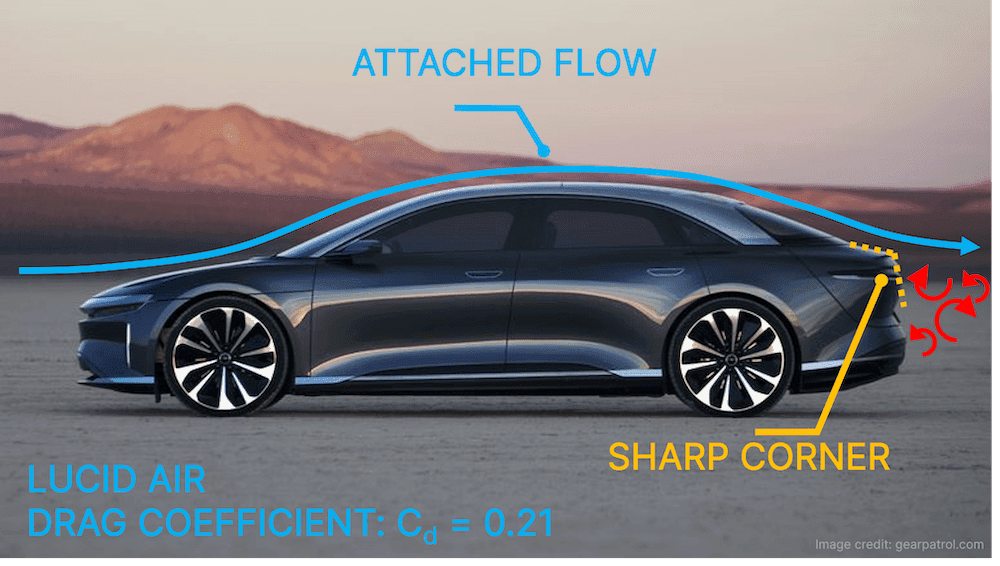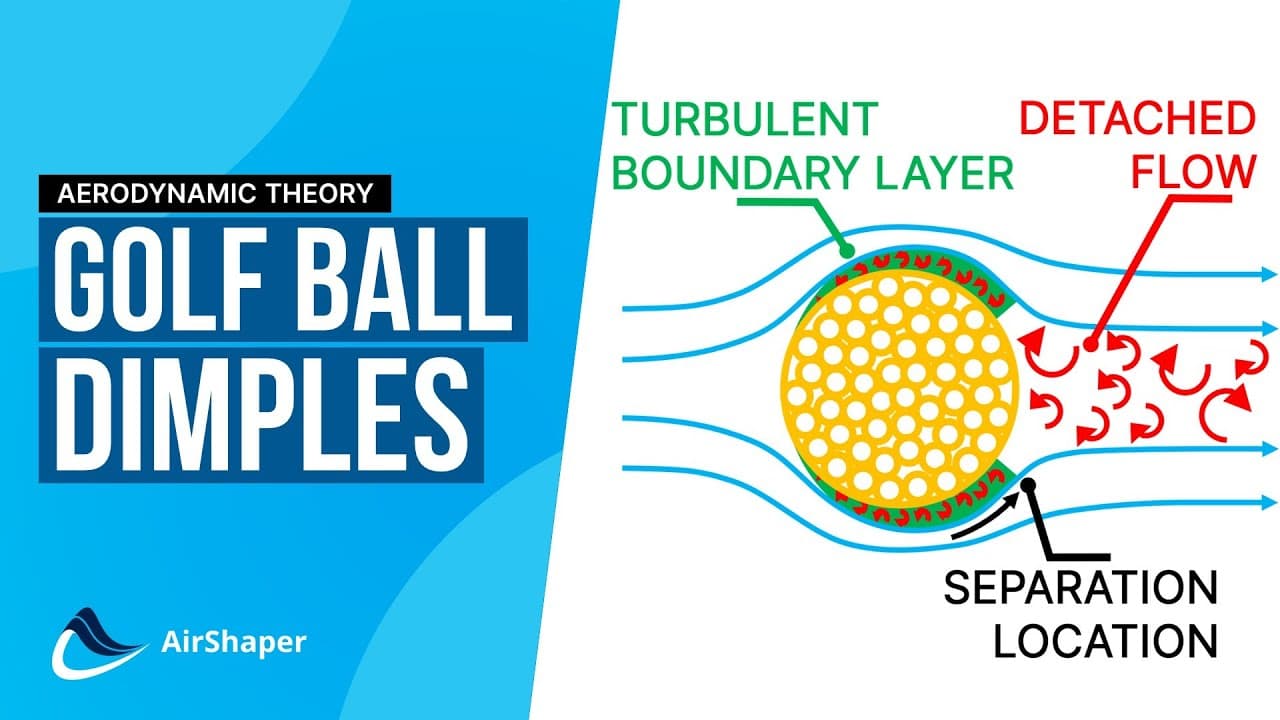Like most sports, golf is affected by aerodynamics. If the game was played with smooth golf balls, the dynamics and tactics of the game would be very different. However, the dimples on a golf ball play an important role in the path it will take after impact. So how do dimples affect a golf ball's aerodynamics and when should dimples be used to improve performance?
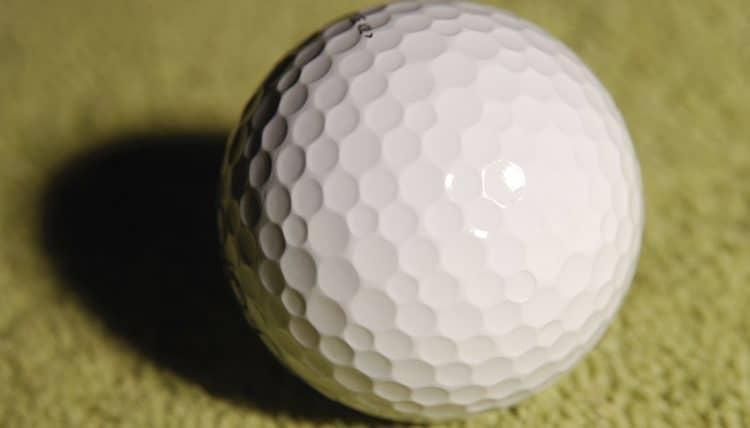
Aerodynamics of smooth golf balls
As air flows over a smooth sphere, such as a golf ball without dimples, the flow is initially attached and laminar at the front side of the ball. The air then starts to stick to the ball's surface locally, creating a boundary layer of slower moving air. This boundary layer becomes thicker as the air continues to stick to the surface as it flows over the ball.
After the halfway point, the flow needs to contract around the object and so it becomes increasingly difficult for the flow to remain attached. Eventually, the flow separates leaving a trailing portion of the flow, known as the wake. The flow within the wake is extremely turbulent, creating drag which consequently reduces the ball's overall velocity. Therefore, thinner wakes allow objects to reach higher speeds and in the case of golf balls, travel further.
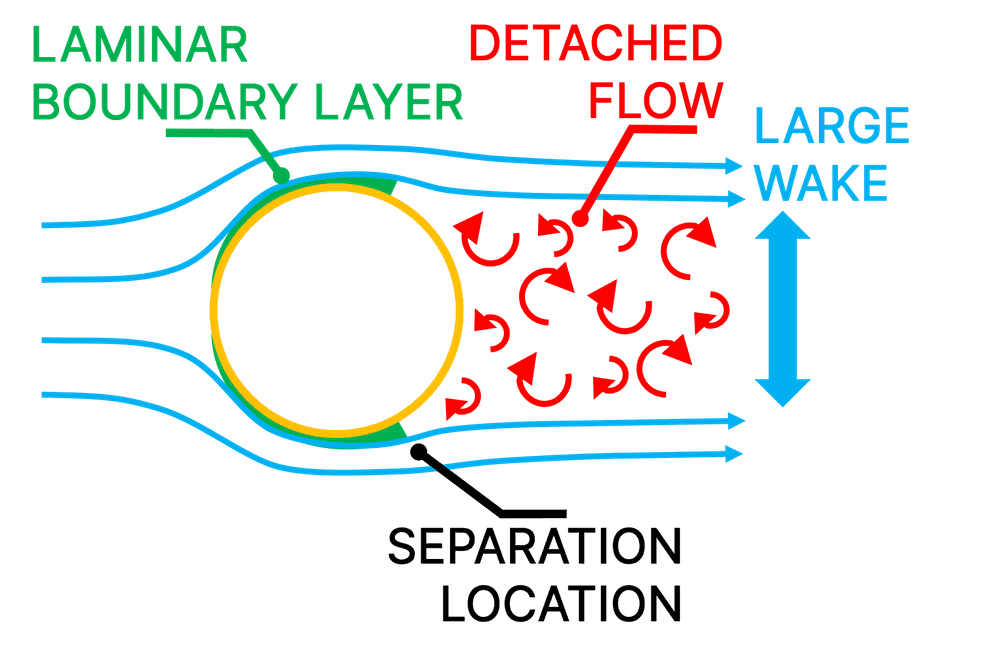
Aerodynamics of golf balls with dimples
When dimples are applied to the surface, the boundary layer of air becomes turbulent as the golf ball travels through the air. This turbulent flow mixes with the air around the surface of the golf ball and allows more retention of kinetic energy. This increase of kinetic energy enables the flow to stay attached with the surface for longer, so the flow detaches much later downstream, reducing the size of the wake.
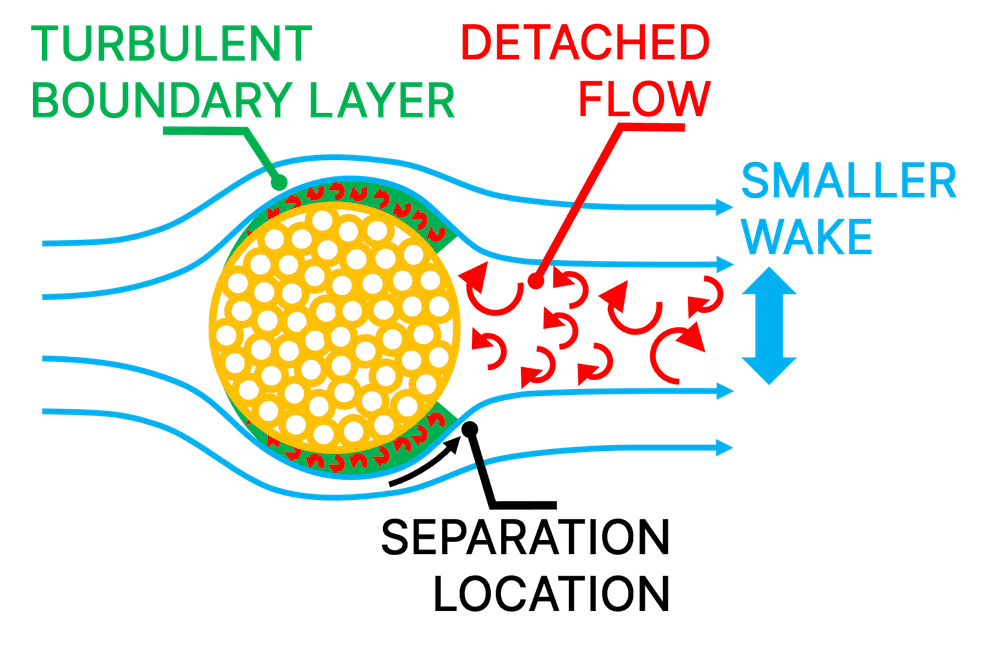
The friction drag increases a little as the ball is in contact with the turbulent boundary layer for a longer period of time. However, the pressure drag reduces much more in comparison. Overall, a golf ball with dimples can travel twice as far than a golf ball without dimples.
Different types of dimples
For the majority of golf balls, the number of dimples ranges between 300 and 500. The aerodynamics are significantly affected if the dimples either exceed this number or the standard depth of 0.10 inch. However, the dimples themselves don't necessarily have to be circular, there are some golf balls that have hexagonal shaped dimples.
When to add dimples
However, not every object that interacts with a fluid will benefit from having dimples applied to its surface. Often, dimples are not necessary and can even be unhelpful in some cases. Dimples should only be used to create turbulent boundary layers just ahead of the point of separation. The resulting reduction in pressure drag will then depend on the Reynolds number as well as the layout of the dimples.
The exact location and amount of dimples depends on the direction of the air flow relative to the object. Golf balls have dimples over the entirety of their surface because of directionality. When a golf ball is hit, the direction of how the air interacts with the surface is unknown.
However, if the air is always flowing from the same direction, then dimples only need to be added just before the separation point. They are not needed at the back of the object where the flow is detached. Cylinders are another good example of where dimples can be used to affect the surface texture and promote more turbulent flow.
In a similar way to dimples, the surface roughness of cyclists uniforms is increased in specific locations to help generate a turbulent boundary layer. The upper arms, which are effectively two upright cylinders, significantly contribute to the cyclists wake and therefore drag. Since the air is always approaching from the same direction, albeit with slight variations in angles of attack, dimples are incorporated right before the flow separates on the upper arms.
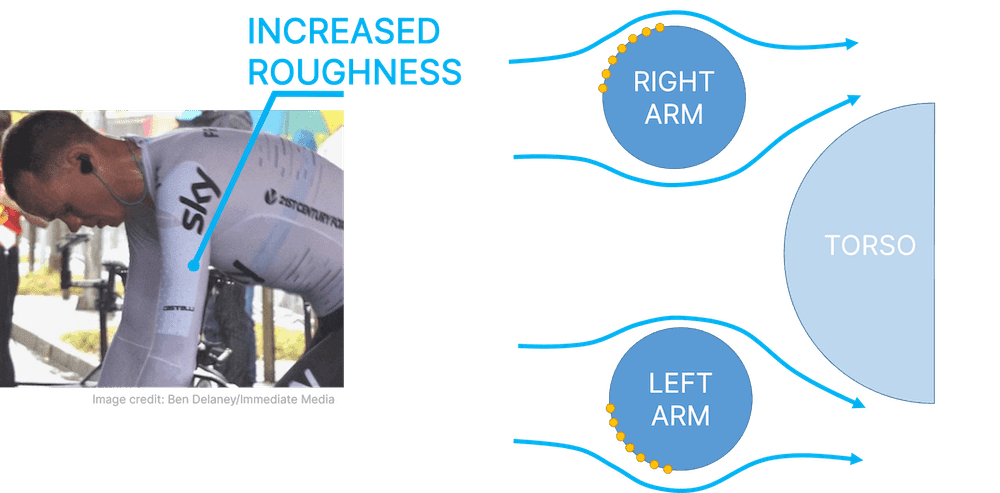
An example of where dimples are not needed is on modern day cars. These vehicles now have such sleek profiles that the airflow remains attached all the way to the rear of the car. Consider the saloon car in the image below, the flow detaches due to the almost 90 degree angle of the trunk. Even with a turbulent boundary layer, it is too difficult for the air to follow this sharp curvature so there is no need to add dimples.
